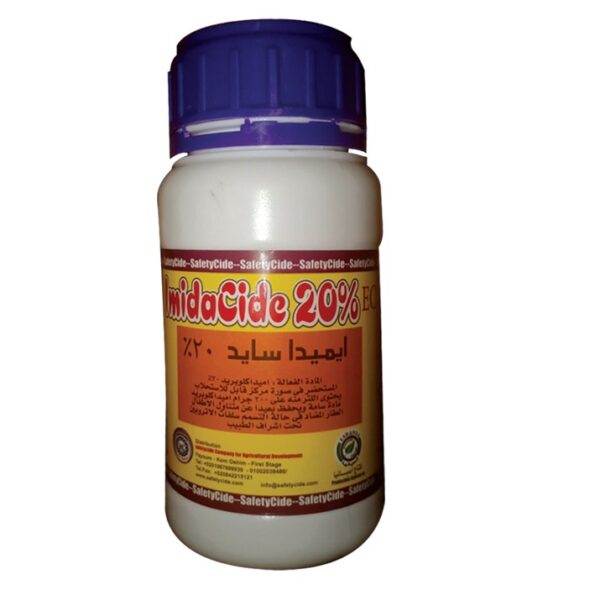
Imaida Side
230.00EGP 180.00EGP
المادة الفعالة : ابعيداگلوبرید ۲۰
المجموعة الكيماوية انيونيكوتينويد
التعريف مبيد حشري نيونيكوتينويديكافح العديد من أنواع الأفات الحشرية ويستخدم على العديد من المحاصيل الحقلية والخضر والفاكهة .
مناسب لبرامج المكافحة المتكاملة . يحافظ على البيئة والأعداء الحيوية نظرا لفاعليته في مكافحة الأفات فانه يزيد المحصول ويحسن جودته مناسبا في التصدير
Imaida Side
المادة الفعالة : ابعيداگلوبرید ۲۰
المجموعة الكيماوية انيونيكوتينويد
التعريف مبيد حشري نيونيكوتينويديكافح العديد من أنواع الأفات الحشرية ويستخدم على العديد من المحاصيل الحقلية والخضر والفاكهة .
مناسب لبرامج المكافحة المتكاملة . يحافظ على البيئة والأعداء الحيوية نظرا لفاعليته في مكافحة الأفات فانه يزيد المحصول ويحسن جودته مناسبا في التصدير .
Impact method
– ايميدا سايد يتدخل في طريقة عمل الوصلات العصبية من خلال التأثير على مستقبلات الأسيتايل كولين فتمنع استقبال ونقل الاشارات العصبية مما يؤدي الي تعطيل الجهاز العصبي ، وتوتر شديد وبالتالي الموت السريع للحشرات المعاملة .
– الميدا سايد ذو فعالية جهازية فائقة ، تحقق توزيع مثالي داخل أنسجة الأوراق المعاملة .
– الميدا سايد يؤثر بالسلامة ومعدي .
– ایمیدا ساید يقضي على الحشرات الثاقبة الماصة التي تتغذى على محتويات الورقة الداخلية من كلا السطحين العلوي والسفلي ، فيتوقف الضرر وتعوت الحشرات في النهاية .
طريقة الاستخدام – والاحتياطات
ايميدا سايد يستخدم رشا على المجموع الخضري ، حيث يمتص من خلال الأوراق وينتقل مع العصارة – لأنه جهازي – الي جميع أجزاء النبات مما يحقق كفاءة عالية في مكافحة الحشرات .
ايميدا سايد يستخدم بطريقة المعاملة الأرضية بالحقن في اجهزة الري بالتنقيط بمعدل ۳۵۰ سم 3 للفدان حيث يمتص عن طريق الجذور وينتقل مع العصارة – لانه جهازي الي باقي أجزاء النبات الخضرية ، ويحقق أيضا كفاءة عالية في مكافحة الحشرات المعملة به
ایمیدا ساید بطريقة الاضافة في محلول للسقاية .
1 لترماء | صيتيه . / ۱ سم 3- سقاية الصواني في مشاتل الخضر بمعدل هر 0.50 معاملة المشاتل الأرضية بعد نثر بذور التقاوي في المشتل وتغطيتها ، يضاف محلول المبيد مخففا بالماء بمعدل 20م2 من أرضية المشتل . / ۲۰ سم ۳ – ۱ لتر ماء لمدة 10 دقايق ، ثم تنتقل للارض / نقع الشتلات قبل الزراعة في محلول المبيد بمعدل 15 سم ۳ التوصيات المحلية
Pre-harvest period, usage rate, crop pest
5 يوم 300سم / فدان ذبابة البنجر بنجر السكر
21 days 75 cm/100 liters of water Citrus scale insects
التوصيلات العالمية
:
Usage rate, crop lesion
250 cm/100 liters of onion thrips
50 cm/100 liters of water from potato manna
50 cm/100 liters of manna water, bean tunnel makers
100-125 cm/100 liters of water: aphids, whiteflies, cucurbit thrips
100 cm / 100 liters of water Aphids, whiteflies, mealybugs, scale insects, ornamental plants
100 cm / 100 liters of water, manna, jassid, peach - apricot
350 cm/acre, injected with drip irrigation for grape mealybugs
350 cm / 100 liters of water or 500 cm / acre by injection with drip irrigation Tunnel makers, mealybugs, citrus scale insects
20-30 cm/palm 100 cm/100 liters of water Red palm weevil, palm scale insects
Based on 0 reviews
|
|
|
0% |
|
|
|
0% |
|
|
|
0% |
|
|
|
0% |
|
|
|
0% |
Related products
Installation:
Ammonium nitrogen: 1.36%
Nitrate nitrogen: 8.45%
Calcium: 10%
Total nitrogen: 10%
Compound features:
Supercalcium carbonate: an energy compound that works to liberate calcium so that it becomes a cation
Which facilitates and accelerates its rapid absorption and entry into the plant. Also, the presence of the element in the form of a free cation makes the element work within the plant in functional tasks quickly, which reduces calcium deficiency and prevents the appearance of symptoms of calcium deficiency on the plant. Supercalcium chloride increases the plant's immunity against fungal infection.
Supercalciumporer (salt repellent)
The presence of the calcium element in the compound in the form of a free cation facilitates and accelerates the association of the calcium element with chlorine and the expulsion of the sodium element, which is washed through the irrigation water.
التركيب : المادة الفعالة : دلتامثرين
المتحضر في صورة مركز قابل للاستحلاب
خواص المركب : يستعمل دلتا سايد كمبيد حشري للقضاء علي العديد من الحشرات الضارة التي تصيب المحاصيل الحقلية و الخضر
98 in stock
Installation:
Free amino acids: 45%
Nitrogen:20%
Compound benefits
Nitroaminofertilizer in the form of a paste contains a high percentage of amino acids and nitrogen in a free form that is easily absorbed by all vegetable and fruit crops to stimulate metabolism and increase plant energy.
Nitroamino is characterized by providing the binding energy between amino acids necessary to bind together amino acids, enzymes, and carbohydrates, thus increasing their concentration within the plant.
Nitroamino reduces the effect of stress resulting from high temperature or frost
Nitroamino significantly increases vegetative, flowering and fruit growth, as it helps in the formation of auxins and hormones responsible for the elongation process in the stems, as well as the growth of buds and the formation of flowers and nodes.
Tetroamino significantly increases per-acre production
Dosage and rate of use:
Nitroamino is added at a rate of 1-2 g/liter of water
Installation
Nitrogen:10%
phosphorus:5%
Potassium: 25%
Magnesium: 1%
Compound benefits
Safety potash fertilizer is characterized by containing nitrogen without borate
Phosphorus is easily absorbed, and potassium is in a high percentage (potassium nitrate) in its pure form
Easy to absorb, as it is loaded with a high percentage of amino acids, monosaccharides, and carboxylic acids that accelerate and facilitate the absorption of macro and micro elements through the leaves.
Safety Potash is characterized by the presence of a high percentage of potassium, which facilitates absorption
Potassium plays an important and significant role in transporting nutrients to and from the cell. It also helps absorb water, which increases the size of the fruits and the speed of their ripening.
Safety Potash contains amino acids that help the plant produce a high concentration of hormones and enzymes and reduce the effect of stress on the plant.
Safety potash fertilizer contains microelements in a high percentage that helps in treating the deficiency of elements in plants. Zinc and magnesium also have a major enzymatic role that increases plant immunity.
Usage rates
Times of use: Drip irrigation, foliar spray per 100 liters of crop water
3-5 times 1 liter/acre 50-150 cm vegetables
4-6 times 1-2 liters/acre 50-200 cm of fruit
A distinct compound because it contains the element magnesium in the form of magnesium nitrate, which is one of the best forms ever through which magnesium is absorbed into the plant.
Compound features
Magnesium plays an important role as it acts as an activator for some enzymes responsible for transporting phosphorus in the metabolism process.
Magnesium is involved in the synthesis of proteins and is considered the primary color and central element of the chlorophyll molecule. Therefore, it is essential in the process of photosynthesis and thus increases production rates and raises the quality of crops.
. Magnesium is the primary regulator of potassium absorption within the plant and acts as a waxy layer on the plant's fruits
– The presence of nitrogen for protein formation within the plant
- It works to increase crop productivity
Usage rates
Foliar spraying: 3-5 g per liter or according to the fertilization program
Ground fertilization: 3-5 kg per acre or according to the fertilization program
Installation:
Phosphorus: 9%
Potassium: 47%
Compound benefits
Phos-potassium fertilizer is characterized by its rapid absorption, therefore, because the elements are loaded with amino acids, carboxylic acids, and monosaccharides.
The compound is characterized by the presence of phosphorus in two forms: phosphate as a nourishment and phosphate as a prevention and treatment of
Fungal diseases such as: downy and powdery mildew diseases in onions, cucumbers, cantaloupes, and grapes
Phytoncera fungal diseases, such as: late blight in potatoes and tomatoes
Pythium and Fusarium fungal diseases on: vegetable and fruit seedlings (root rot)
It also contains potassium, as well as zinc and magnesium. Therefore, the potassium phosphate compound has a major role in plants, especially in raising the plant’s immunity. Potassium phos fertilizer also works to increase the efficiency of the process of flowering, setting, and growth of the fruit stage in different crops, which increases the size of the crop and the quality in terms of color. The shape and taste
Dosage and frequency of use:
Application and time of use, usage rates and yield
Foliar spraying every 7 days during the crop growth period (vegetative, floral, fruitful) 1-3 cm/liter of water for vegetables
(tomatoes - potatoes - onions - cucumbers - cantaloupe)
Fertilizing with water. Irrigation 3 days after transplanting. Repeat 2 times a week. 1-1/2 liter/acre. Vegetables (after transplanting)
Foliar spraying every 7 days during the period of vegetative growth, flowering, and fruiting. 2-4 cm/liter of water for fruit and ornamental plants.
The addition is made with head water every 10 days during the growing season, 5 cm per 8 liters for fruit seedlings and ornamental plants (seedlings).
Installation:
Total nitrogen
Ammonium nitrogen
Nitrate nitrogen
Phosphorus
Benefits of the Hyperroute vehicle:
A new combination of a group of vitamins, organic, amino and carboxylic acids, as well as a high concentration of phosphorus, which facilitates absorption and has a small molecular size. Therefore, complete absorption of the phosphorus element occurs, and the concentration of phosphorus within the plant increases, thus increasing the carrot total, and the results appear quickly after use.
Hyperroot is characterized by containing free phosphorus that is easy and quickly absorbed, and the organic, amino, and carboxylic acids act as a chelating substance, so it can be used in the flowering and setting stages.
Dosage and usage rates
In case of root activation: 2 liters/acre and repeated
In case of flowering: 5 liters/acre and repeated
Foliar spraying: 202 cm/liter of water
Installation:
10%: Nitrogen
potassium:22%
Benefits of the compound:
Potassium nitrate: Soad is suitable for all irrigation systems and can be used as a spray on the leaves. It contains nitrogen in an easily absorbed form. This element is important for the formation of protoplasm, which makes up all living cells. It is also involved in the synthesis of amino acids, proteins, and chlorophyll.
It contains potassium in a high concentration in an easily absorbed form, which is the form of potassium nitrate. The element potassium has a large and important role in plants, as it
It helps in the activity of more than 10 enzymes, helps in photosynthesis, and regulates the process of opening and closing stomata. It is responsible for transporting nutrients to and from the cell, so it increases the sugar content in the fruits (Cantilever grapes).
It works to increase the germ content of the cell, so it works to increase the size of fruits (tomatoes, cucumbers, zucchini).
Potassium nitrate: It is preferable to use it on tuber crops such as (potatoes, yams, and onions), as it helps increase the plants’ ability to store, thus significantly increasing the size of the tubers and the yield.
Potassium nitrate: important for the formation of flowers and knots, so it is preferable to fertilize it during the flowering and licking stage
Usage rates: - Ground use: from 3-7 liters/acre depending on the crop and age of the plant. – Foliar use: from 22 cm/liter of water during the vegetative growth stage and before flowering
Installation:
Nitrogen: 17%
Phosphorus: 44%
Compound features:
Dab Phosphoric. It is a fertilizer suitable for all irrigation systems and can be used as a spray on the leaves. It contains nitrogen, which is important for the formation of protoplasm, which makes up all living cells. It is also involved in the synthesis of amino acids, proteins, and chlorophyll. It contains high phosphorus in the form of di-aminophosphate with urea phosphoate, which dissolves quickly and is absorbed. Phosphorus is also responsible for the transformation of carbohydrates, such as starch into sugar, and is involved in the formation of energy-carrying substances. It also works to stimulate the roots. Phosphorus is also important for the formation of flowers and increasing flower formation. Fruits and helps in coloring and ripening the fruits
Usage rates
– Ground use: from 2 to 5 liters per artist, depending on the crop and the age of the plant
– Foliar use: 2-3 cm/L during the vegetative growth stage and before flowering
the definition:
Fina Bayer is available in the form of a concentrate that can be emulsified and the use of natural solvents makes the compound’s efficiency higher than the permeability through the skin of the caterpillars, as well as the local permeability in the leaf epidermis, which facilitates the access of the active substance to the larvae located under the leaf epidermis, such as (tunnel makers - Tuta absoluta).
Venapyr is an acaricidal and insecticide. It belongs to a new chemical group (pyrrole) that was discovered among natural insecticides.
Vinapyr is an acaricide with a very effective and long-lasting effect against various acaricides, thus protecting crops during the growing season with fewer sprays compared to many sprays with other pesticides.
Venapyr is an acaricide with a new, distinctive and effective formula against acaricides that have gained immunity from other acaricides. Tests showed that there are no strains resistant to the active ingredient chlorfenapyr.
Pre-harvest period, usage rate, crop pest
3 days 300 cm/acre beet fly sugar beet
21 days 75 cm/100 liters of water Citrus scale insects
Global connections:
Usage rate, crop lesion
250 cm/100 liters of onion thrips
50 cm/100 liters of water from potato manna
50 cm/100 liters of manna water, bean tunnel makers
100-125 cm/100 liters of water: aphids, whiteflies, cucurbit thrips
100 cm / 100 liters of water Aphids, whiteflies, mealybugs, scale insects, ornamental plants
100 cm / 100 liters of water, manna, jassid, peach - apricot
350 cm/acre, injected with drip irrigation for grape mealybugs
350 cm / 100 liters of water or 500 cm / acre by injection with drip irrigation Tunnel makers, mealybugs, citrus scale insects
20-30 cm/palm 100 cm/100 liters of water Red palm weevil, palm scale insects
Installation:
Nitrogen:10%
potassium:20%
Benefits of the compound: Line Potash fertilizer is characterized by containing nitrogen and potassium in pure, easy-to-absorb form. It is also loaded with a high percentage of amino acids and carboxylic acids that expand and facilitate the absorption of major and minor elements through the leaves. Line Potash is characterized by the presence of a high percentage of potassium, which facilitates absorption. Line Potash contains amino acids that help the plant to form a high concentration of hormones and enzymes and reduce the effect of stress on the plant.
The importance of potassium for plants
It plays an important role in the mechanics of opening and closing stomata and thus controls the water balance within the plant
It plays an essential role in activating important enzymes in protein formation
It plays a role in the formation of carbohydrates at the fruit formation stage
It has an important role in the apical dominance of the plant
It will help absorb water and nutrients and transfer them to the leaves
Transports mineral salts and carbohydrates to water
Usage rates
Times of use: Drip irrigation, foliar spray per 100 liters of crop water
3-5 times 1 liter/acre 50-150 cm vegetables
4-6 times 1-2 liters/acre 50-200 cm of fruit
38 in stock
فوسفیت
Installation
فوسفور
P : % 43 ( وزن / حجم )
بوتاسيوم K : % ۲۸
( وزن / حجم ) ماغنسيوم : أ % ( وزن / حجم )
Compound benefits
فوسفيت :
يزيد ويعزز من النمو الجذري يحسن الطعم والتخزين ولون محاصيل الفاكهة نتيجة تمكين النبات من زيادة المواد الصلبة وتحسين خواص الثمار .
يحسن النظام المناعي للنبات حيث يعمل على تحسين مستوى مقاومة النبات للأمراض الفطرية حيث يقي من :
القرعيات و البياض الزغبي والنقيقي و عفن التاج الجذري و البطاطس والطماطم و اللفحة المبكرة
والمتأخرة وعفن الجذور و البياض الزغبي والدقيقى و الفراولة وعفن الجذور والثمار
و الحمضيات و عفن جذور الحمضيات و التفاح
• العنب
Dosage and rate of use:
Application and time of use, usage rates and yield
Foliar spraying every 7 days during the crop growth period (vegetative, floral, fruitful) 1-3 cm/liter of water for vegetables
(tomatoes - potatoes - onions - cucumbers - cantaloupe)
Fertilizing with water. Irrigation 3 days after transplanting. Repeat 2 times a week. 1-1/2 liter/acre. Vegetables (after transplanting)
Foliar spraying every 7 days during the period of vegetative growth, flowering, and fruiting. 2-4 cm/liter of water for fruit and ornamental plants.
The addition is made with head water every 10 days during the growing season, 5 cm per 8 liters for fruit seedlings and ornamental plants (seedlings).

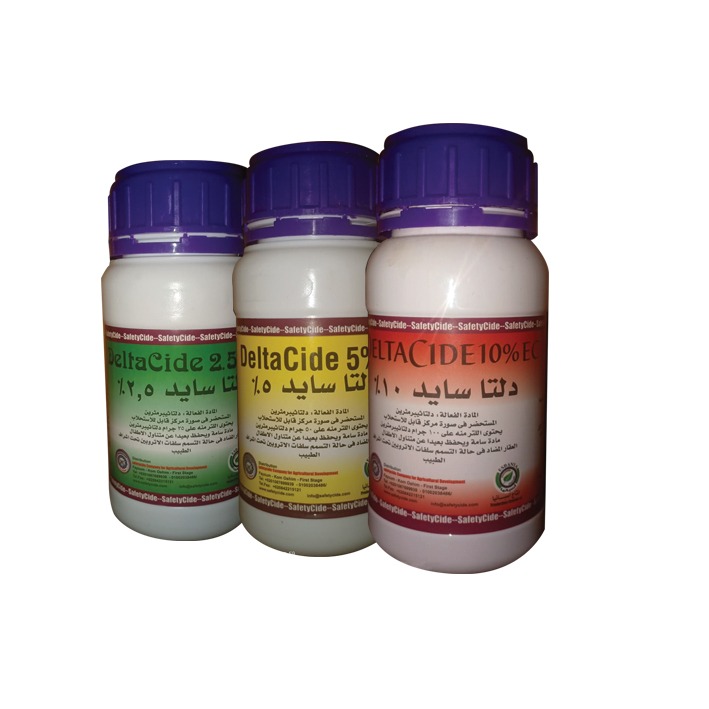
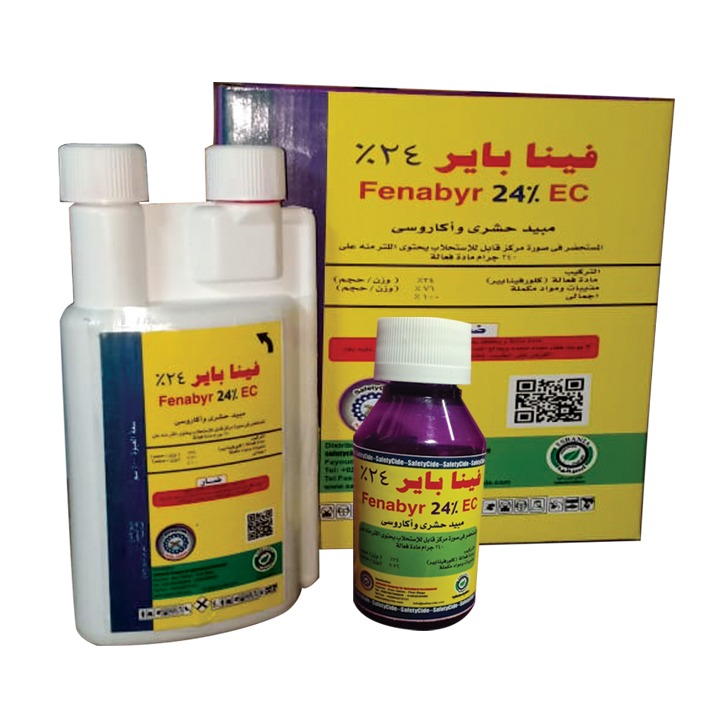
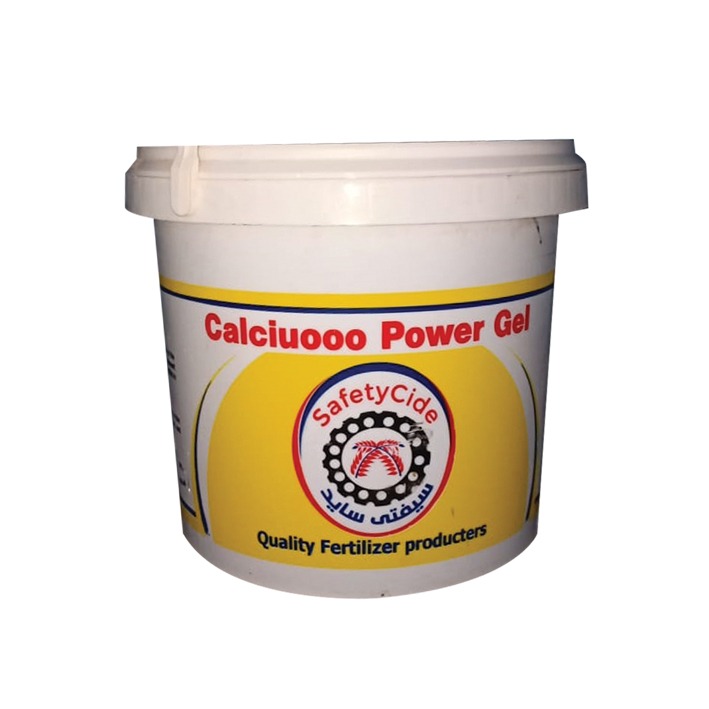





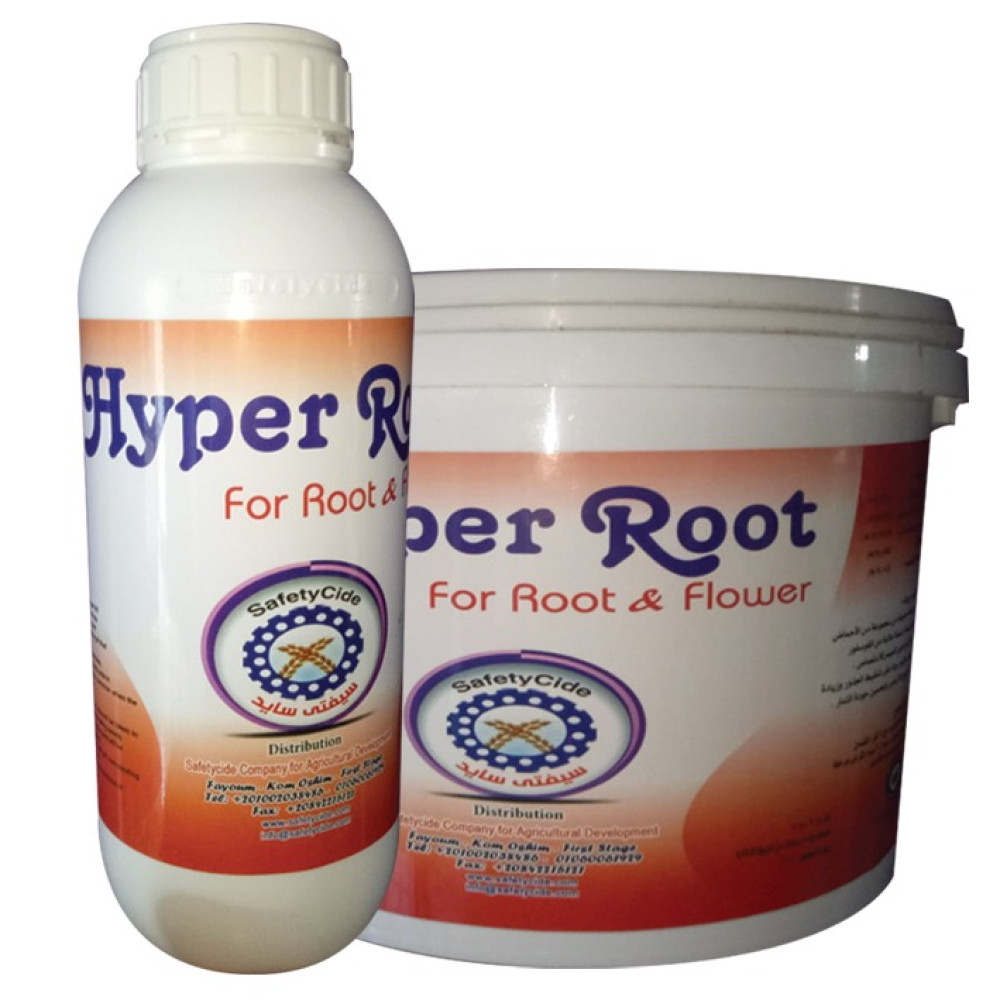

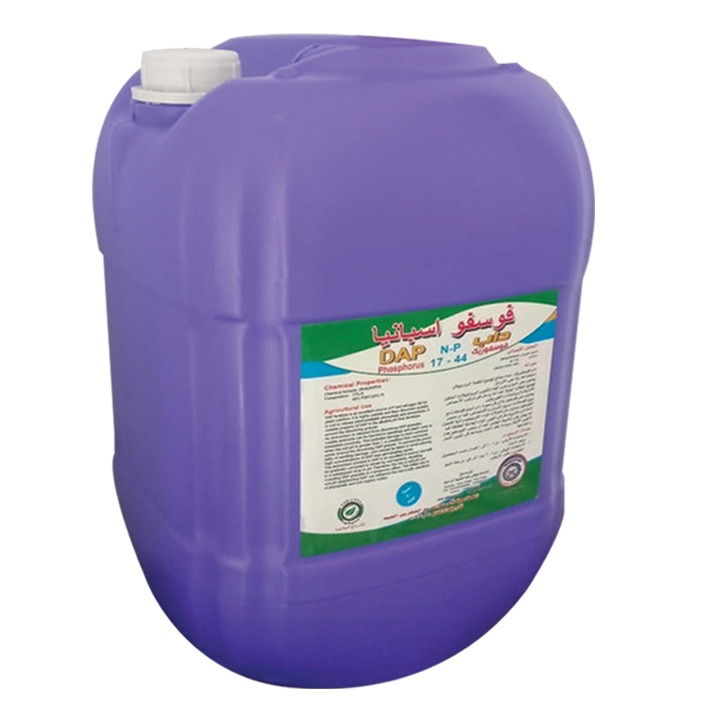


Reviews
There are no reviews yet.